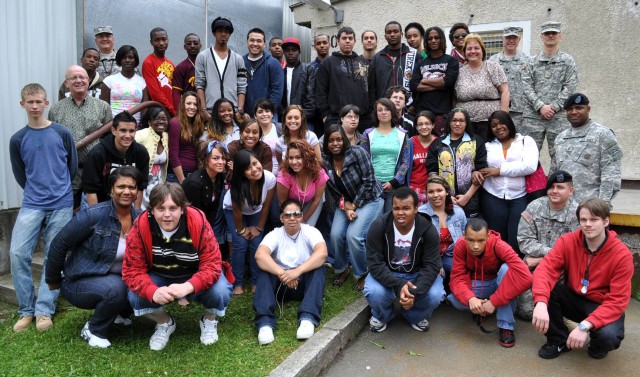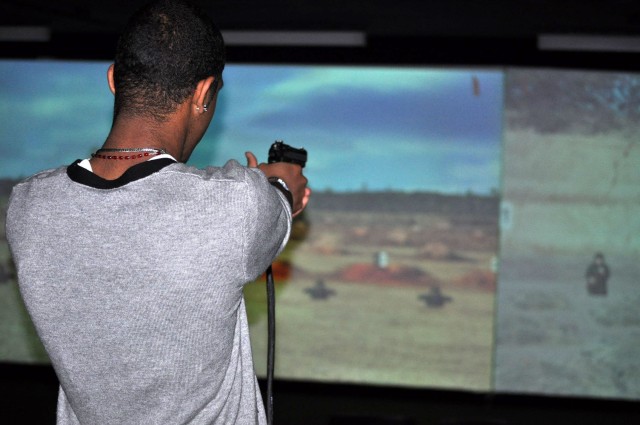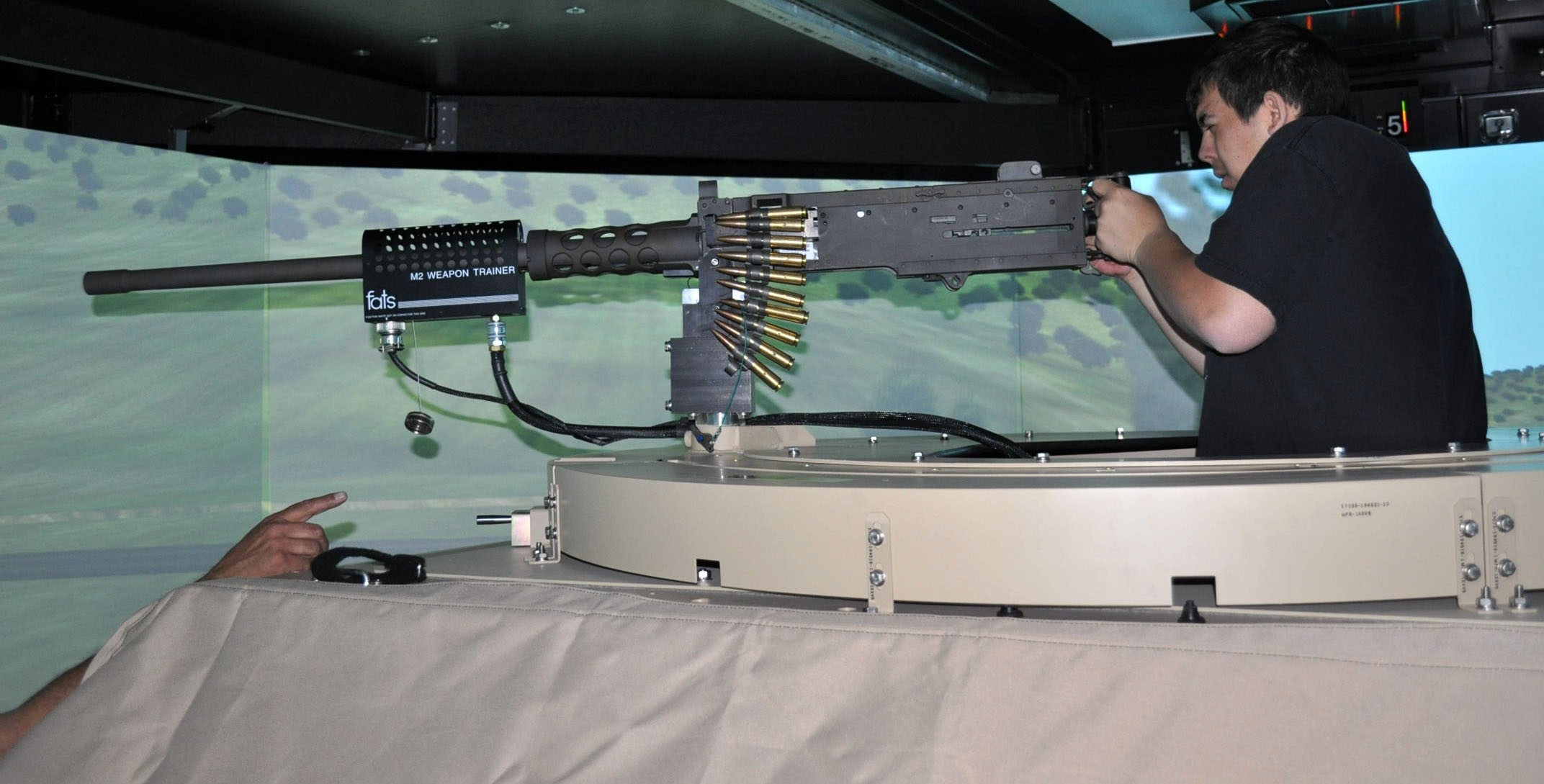GRAFENWOEHR, Germany - Eager High School students press firmly into a good shooting stance, staring intently at the simulator screen in front of them, not wanting to miss the pop up target they are about to engage.
It was career day for 38 Vilseck High school students who took the opportunity to visit the Joint Multinational Simulation Center in the Grafenwoehr Training Area, as the 2010 school year came to a close. The JMSC, which is a part of the Joint Multinational Training Command, is committed to simulating the most current situations on the battlefield in order to create and provide a realistic environment for today's Soldiers to train.
The Engagement Skills Trainer, Reconfigurable Vehicle Tactical Training, and Virtual Battle Space 2 were three of the Army's simulation battle stations the students experienced for about an hour each, under the watchful eyes of representatives from the simulation center.
The first station on the agenda was the EST range which is used to train an individual Soldier's marksmanship using virtual targets.
After having a chance to fire both a 9mm pistol, the M-240 Bravo machine gun and the M-16 rifle at the EST range, Andrew Feazelle got a taste of what he might be training on in his future.
"I've been thinking of going in the Air Force. I want to do something exciting," said Feazelle, who is thinking of joining the military as a pararescue medic and said he appreciates a chance to view future training.
Up next was the RVTT, one of the newest simulation trainers at JMSC. The RVTT has four full-scale HMMVV's in separate trailers and can hold up to five Soldiers in each.
They are outfitted with four weapons, two individual small arms, an M-249 machine gun and an M-2 .50 caliber machine gun. There is a 360 degree projector so the occupants are forced to work as a team while trainers present real-life scenarios. Many of the scenarios are unsafe to replicate on a range, such as Improvised Explosive Devices, ambushes, fires and vehicle malfunctions.
"I love training Soldiers; I have done it my whole adult life. Either on active duty or in the civilian world," said Bruner Caudill, who has operated the system since its induction in December of 2009, but has been training troops in simulations for the last ten years.
The final station visited, was the Virtual Battle Space 2, a computer-based simulation, much like the game Modern Warfare, for platoon- to company-level training. But unlike Modern Warfare, there isn't an infinite amount of ammo or lives. In an effort to mimic hostile situations the trainers make the game as realistic as possible.
There are two stations; the first has a steering wheel attached to a desktop and he is the driver. The other computer looks like a regular workstation and functions as the gunner. The VBS2 taught the students the foundation of working as a unit in your vehicle and how that vehicle functions as a member of the convoy.
"Soldiers continue to play it on their break," said Carl Merfert, the Subject Matter Expert for VBS2 and a retiree of Fort Carson Artillery, 3rd Brigade Combat Team. He said the training terrain is the most realistic thing out there. The system is only growing, with the program VBS2 Fire, for artillery.
Lt. Col. Packard Mills, the deputy director of Directorate of Simulations and Training Support feels that showing students another side of the Army, helps the community and families better support their servicemembers and feel more confident in their Soldier's skills.
"A teacher has a husband in the military. She can see what he does and it helps her to see how he keeps safe and so she can feel safer."
Mills went on to say, "This training is a lot like giving a person a recipe for cookies or letting them taste the cookie themselves. The training is limited only by the unit's imagination."
After a full day, Luis Alvariz, a freshman of Vilseck High School, had some thoughts about the latest simulation training at JMTC.
"Good, kind of hard but good. Soldiers have to go through a lot of stuff; I think I could do it."






Social Sharing